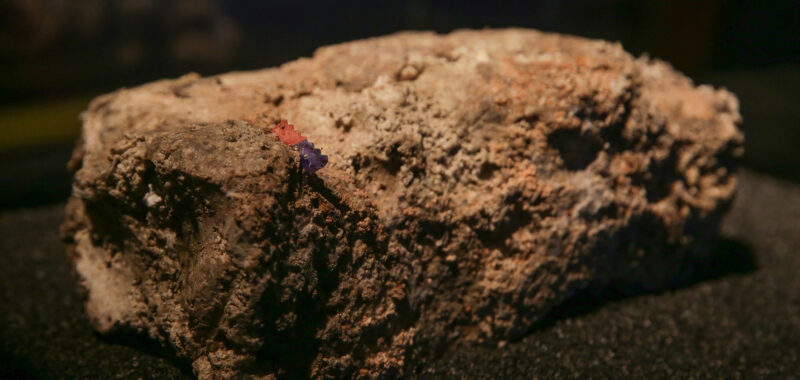Fatbergs are a pretty disgusting threat lurking below cities and towns around the world. These buildups of fats, oil, and grease–or FOG–can mix with the calcium and water in sewer systems and form these giant blockages that solidify inside pipes and concrete sewers. Now, a team of engineers from the Royal Melbourne Institute of Technology University (RMIT) in Australia have invented a protective coating for concrete pipes that could help reduce the number of fatbergs that form in sewers. The findings are detailed in the November 2024 issue of the Chemical Engineering Journal.
[Related: The grease recycling industry feeds on your city’s oily underbelly.]
Fatbergs are responsible for roughly half of all sewer blockages in the United States and 40 percent in Australia. Fixing these blockages cost an estimated $25 billion in the US and $100 million in Australia every year.
This new zinc-enhanced polyurethane coating offers a potential solution. According to the team, it reduces the release of calcium from concrete blocks by up to 80 percent compared with uncoated concrete.
In the new study, the team mimicked a sewer environment under extreme conditions in a lab and rapidly sped up the fatberg formation process over 30 days. The coating reduced the build up of FOG on the concrete by 30 percent when compared to the non-coated concrete.

“The reduction of fat, oil and grease build-up can be attributed to the significantly reduced release of calcium from coated concrete, as well as less sticking of FOG on the coating surface compared to the rough, uncoated concrete surface,” study co-author and RMIT University civil and infrastructure engineer Biplob Pramanik said in a statement. “Traditional coatings like magnesium hydroxide, widely used for over two decades, are effective in controlling sewer corrosion but can inadvertently contribute to FOG build-up by interacting with fatty acids.”
Additionally, the new invention is stable in water and can withstand temperatures of up to 122 degrees Fahrenheit (850 degrees Celsius). The coating is also self-healing at room temperature which means that it can repair any damage to itself. This extends the coating’s lifespan and makes it more sustainable.
“We drew inspiration from the regenerative capabilities observed in nature, including human skin’s ability to heal itself,” Pramanik said.
[Related: The inside scoop on Charmin’s fake poop (and how it helps keep your butt clean).]
To examine how the coatings can heal, the team scratched its surfaces with a sharp blade.
“The creation of surface scratches on the self-healing polyurethane coating sample triggered the healing process,” study co-author and RMIT University chemist and engineer Sachin Yadav said in a statement. “After the healing period, we observed a noticeable improvement in the surface scratches.”
The team is currently working on creating an improved coating that can reduce FOG deposits in sewers by enhancing both its self-healing capabilities and mechanical strength. Pramanik is also the Chief Investigator on a project developing an advanced grease interceptor that restaurants can use to remove small FOG particles more effectively.

